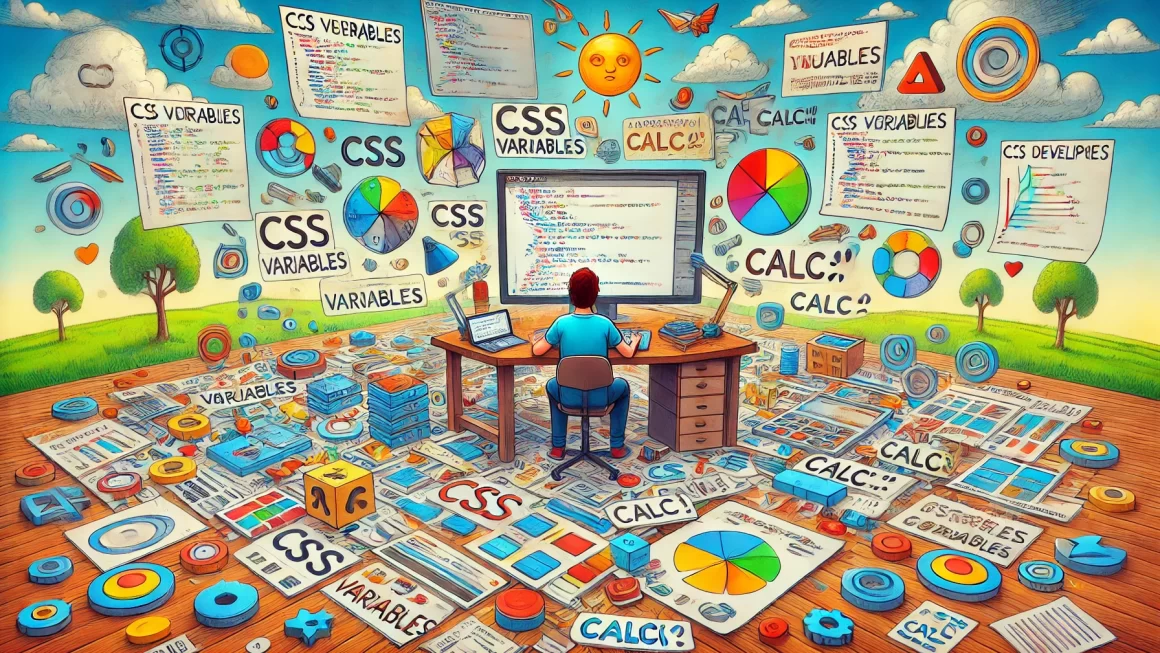In the evolving landscape of web development, CSS has undergone its fair share of transformations, adapting and growing to meet the increasing demands of designers and developers alike. One of the pivotal enhancements in modern CSS is the introduction of CSS Variables and the calc() function. These features not only streamline the coding process but also open up a realm of creative possibilities that were once cumbersome or outright impossible.
Historical Context
CSS Variables, officially known as Custom Properties, were first introduced in the W3C’s specification around 2015. They marked a significant shift towards a more dynamic approach in CSS, where values could be reused and manipulated directly within the stylesheet. This was a move away from the static nature of earlier CSS, where such dynamism could only be injected through pre-processors like SASS or LESS.
The calc() function, which saw its first light in CSS3, allows for performing calculations to determine CSS property values. This function represents a bridge between the design and functional aspects of web development, enabling more flexible and responsive design elements.
Why Use CSS Variables and Calc()?
1. Responsiveness and Flexibility: CSS Variables allow values to be updated dynamically in a stylesheet. For example, changing a base color variable can update the UI theme without altering multiple lines of code. Combine this with calc(), and you can adjust layouts based on these variables, making your designs more responsive to different screen sizes and conditions.
2. Maintainability: With CSS Variables, managing theme styles or adjusting layouts becomes simpler and more centralized. Changes to variables automatically propagate throughout the stylesheet, reducing errors and duplication.
3. Cross-browser Compatibility: Initially, there were concerns about browser support for these features. However, today, both CSS Variables and calc() are widely supported across major browsers, making them reliable tools for modern web design.
Practical Examples
Consider a scenario where you need to maintain a consistent spacing system across your website:
1 2 3 4 5 6 7 8 | :root { --base-spacing: 8px;}.container { padding: calc(var(--base-spacing) * 2); margin: calc(var(--base-spacing) * 3);} |
In this example, changing --base-spacing adjusts the spacing throughout your application dynamically, maintaining a consistent scale.
Another scenario could involve responsive font sizing:
1 2 3 4 5 6 7 | :root { --default-font-size: 16px;}body { font-size: calc(var(--default-font-size) + 1vw);} |
This setup ensures that the font size adjusts slightly based on the width of the viewport, enhancing readability across different devices.
Further Reading and Resources
For those looking to deepen their understanding of CSS Variables and calc(), the following resources are invaluable:
By integrating CSS Variables and calc(), developers can harness the full potential of CSS to create more dynamic, maintainable, and responsive designs. These tools not only solve practical layout problems but also encourage a modular and scalable approach to stylesheet management. As web technologies continue to evolve, embracing these advanced features will undoubtedly be a key factor in crafting successful, modern web applications.




